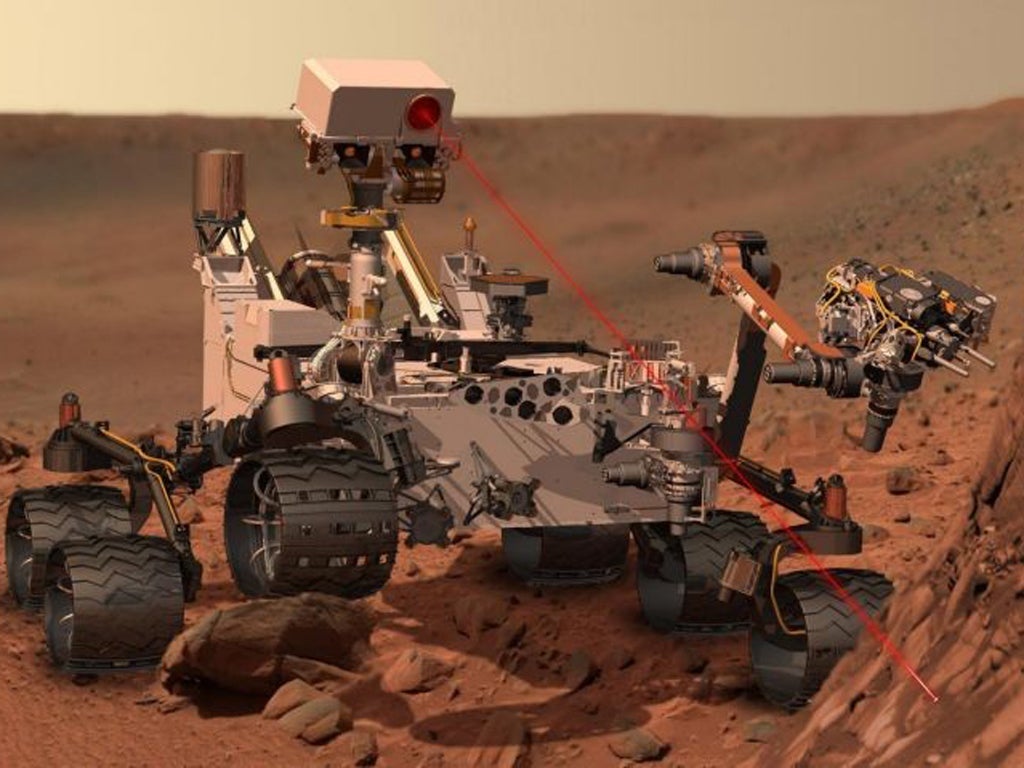Nasa’s Perseverance rover is halfway to Mars – but still has much more than half of its journey to go
The rover is taking a curved route due to the Sun’s gravitational pull

Your support helps us to tell the story
From reproductive rights to climate change to Big Tech, The Independent is on the ground when the story is developing. Whether it's investigating the financials of Elon Musk's pro-Trump PAC or producing our latest documentary, 'The A Word', which shines a light on the American women fighting for reproductive rights, we know how important it is to parse out the facts from the messaging.
At such a critical moment in US history, we need reporters on the ground. Your donation allows us to keep sending journalists to speak to both sides of the story.
The Independent is trusted by Americans across the entire political spectrum. And unlike many other quality news outlets, we choose not to lock Americans out of our reporting and analysis with paywalls. We believe quality journalism should be available to everyone, paid for by those who can afford it.
Your support makes all the difference.Nasa’s Perserverance rover has reached the halfway mark on its journey to Mars.
The mission, which was launched on 30 July, has covered over 235.4 million kilometres.
"At 1:40 p.m. Pacific Time today, our spacecraft will have just as many miles in its metaphorical rearview mirror as it will out its metaphorical windshield," said Julie Kangas, a navigator working on the Perseverance rover mission at Nasa's Jet Propulsion Laboratory.
"While I don't think there will be cake, especially since most of us are working from home, it's still a pretty neat milestone. Next stop, Jezero Crater."
However, despite having travelled halfway the distance between the Earth to the Red Planet, that does not mean that the journey is over halfway completed.
This is because of the Sun’s gravity; Perserverance has had to follow a curved trajectory rather than a straight line between the two planets in order to ensure that it is not dragged off-path.
"Although we're halfway into the distance we need to travel to Mars, the rover is not halfway between the two worlds," Kangas said.
"In straight-line distance, Earth is 26.6 million miles [42.7 million kilometers] behind Perseverance and Mars is 17.9 million miles [28.8 million kilometers] in front."
At the point at which Perserverence lands on Mars, it will have travelled 470.8 million kilometres.
When it does reach the surface of the alien planet, it will begin its task: looking for evidence of ancient life that might have existed on the planet.
The rover is equipped with ‘PIXL’ (Planetary Instrument for X-ray Lithochemistry), which is an instrument attached to the end of Perserverence’s two-meter long arm.
It will drill into the ground to collect samples of Martian fossils, which will then be placed on the surface of Mars for collection during a future mission.
It is also carrying a helicopter that will conduct the first ever flight on another world.
The helicopter is under two kilograms in weight and uses a dual system of counter-rotating blades to fly through atmosphere that is just one per cent as dense as Earth's.



Join our commenting forum
Join thought-provoking conversations, follow other Independent readers and see their replies
Comments